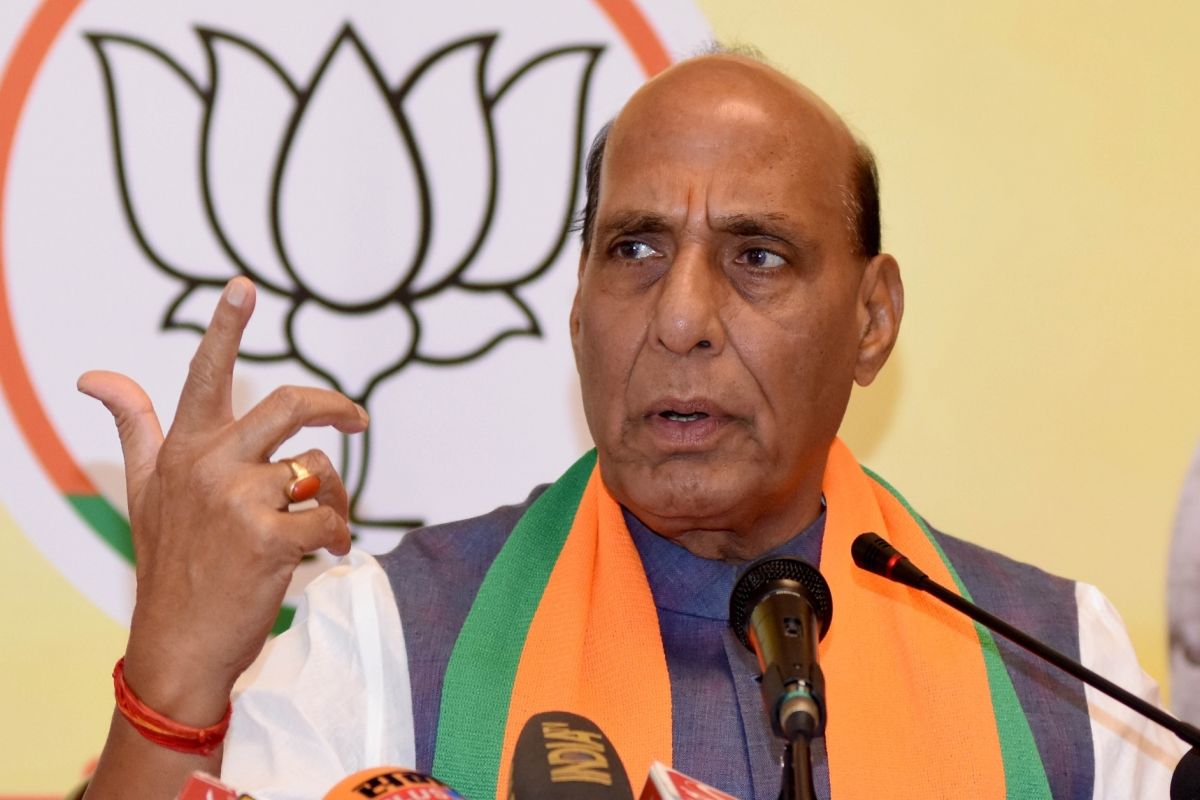As Indian and Chinese troops remained engaged in an eyeball-to-eyeball situation in several areas along the Line of Actual Control (LAC) in eastern Ladakh, Union Defence Minister Rajnath Singh on Tuesday held an elaborate security review meeting with Chief of Defence Staff (CDS) General Bipin Rawat and the Service Chiefs of the Army, Navy and the Air force.
Army chief General Manoj Mukund Naravane updated the Defence Minister about his visit to Leh. On Friday, he visited the headquarters of 14 Corps in Ladakh to review the operational situation amid tensions between India and China along the disputed LAC.
Advertisement
According to IANS, during the meeting it was clarified that Indian Army will hold its fort as talks to defuse the situation would continue in parallel.
In the meeting which lasted for about an hour, it was also decided that road constructions must continue and Indian fortifications and troop deployment must match those of the Chinese.
Top military sources quoted by PTI have said that India has further increased its strength in Pangong Tso and Galwan Valley – the two contentious areas where Chinese army is learnt to have been deploying around 2,000 to 2,500 troops, besides gradually enhancing temporary infrastructure.
A major concern for the Indian military has been the presence of Chinese troops around several key points including Indian Post KM120 along the Darbuk-Shayok-Daulat Beg Oldie road in Galwan Valley.
The Chinese side has particularly strengthened its presence in the Galwan Valley, erecting around 100 tents in the last two weeks and bringing in heavy equipment for construction of bunkers.
The Indian troops are reportedly resorting to “aggressive patrolling” in several sensitive areas including Demchok and Daulat Beg Oldi.
Meanwhile, no breakthrough has taken place till Monday even as the India Army and China’s People’s Liberation Army held several meetings to resolve face-off in Eastern Ladakh at LAC.
The last meeting took place on Sunday but many things remain unresolved, said source quoted by IANS, adding that more commander level talks are in pipeline to resolve the issues.
It is learnt that there have been at least five rounds of talks between military commanders on the ground. While, Indian Army will continue with its construction work along the Line of Actual Control.
Amid tensions between India and China along the disputed Line of Actual Control (LAC) there were reports that an Indian patrolling party was detained and later released by the Chines Army after a skirmish broke out between the two sides in Ladakh, earlier in May.
China has recently accused India of unilaterally attempting to change the status of the un-demarcated border in Ladakh after troops of the two countries were involved in scuffles at Ladakh and Sikkim in which more than ten of them were injured.
While, Indian armed forces have accused Chinese army of blocking patrols and unnecessarily erecting tents and deploying forces at Sikkim and Ladakh inside Indian territory on the LAC between the two countries.
In the first week of May, 250 Indian and Chinese soldiers clashed with iron rods, sticks, and even resorted to stone-pelting in the Pangong Tso lake area.
In the second week of May, around 150 soldiers of both sides had a face-off near Naku La Pass in Sikkim. In both the incidents, soldiers sustained injuries. Both India and China have now deployed addition troops both in tense areas of Galwan valley, Pangong Tso lake and several areas in northern Sikkim.
Two days later, the Air Force rushed its fighter jet patrols in Ladakh after Chinese military choppers were found to be flying close to the Line of Actual Control (LAC).
Earlier, in September 2019, Indian and Chinese troops on the bank of the Pangong Tso Lake in eastern Ladakh got involved in a scuffle which was soon resolved through talks between both the Armies.
In June 2017, the two counties were in news when India opposed China’s road building at Doklam Plateau that made the entire Sikkim and the “Chicken Neck” near Siliguri (connecting the North-east with the mainland) easily accessible to the Chinese army.
India moved its elite strike corps near Sikkim border to counter the Chinese army’s war drills in Tibet. The dispute ended after 73 days when Chinese People’s Liberation Army and Indian Army withdrew their troops from the disputed site.
It is in India’s geo-political interest to protect its territorial sovereignty from a possible Chinese aggression in future that its Army needs to maintain the military vigil in the area.











